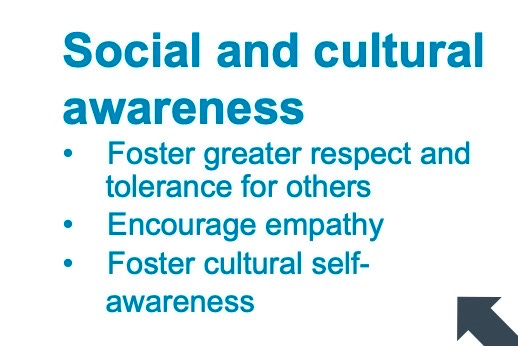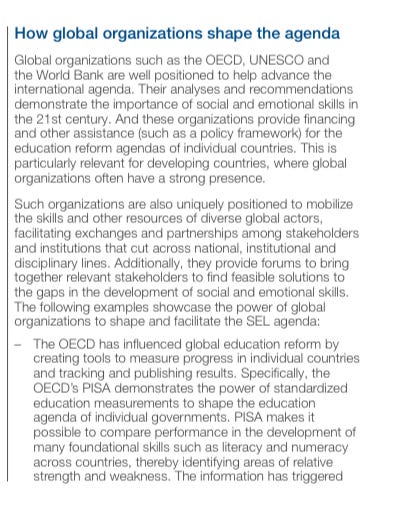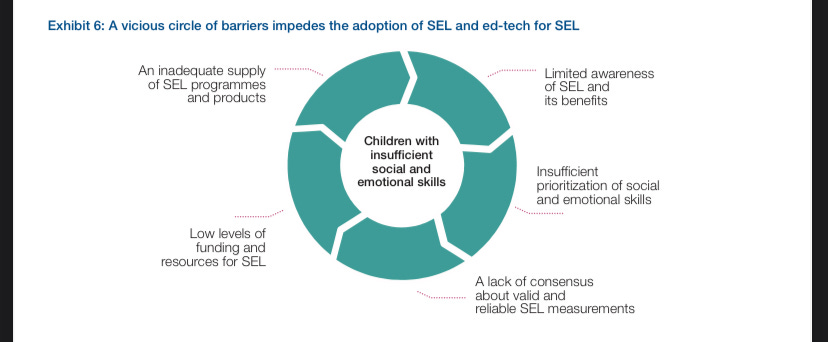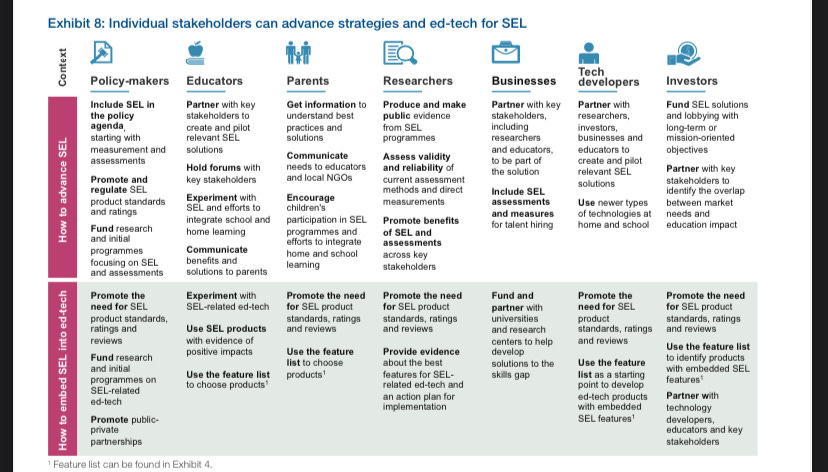The Mining of the American Mind
How the WEF and other global organizations are merging technology, SEL, and public/private educational partnerships to manipulate the minds of 21st-Century students.
The World Economic Forum (WEF) planned in 2016 to implement Transformative Social Emotional Learning (SEL) by using, “technologies such as wearable devices that track students emotional states and psychological reactions to stress,” and sought public/private partnerships to do so. In 2022, they have largely succeeded at this and do not intend to slow down.
On March 10, 2016, the WEF and the Boston Consulting Group issued a report titled, “New Vision for Education: Fostering Social and Emotional Learning Through Technology,” advocating for the implementation of what is now known as Transformative SEL in K-12 education via “futuristic technologies.” At the time the report was released, SEL was widely considered a positive for students. But in recent years, SEL has come under fire for employing covert psychological methods to push a political Critical Social Justice (woke) agenda onto students.
The report lays out what the organization insists are the 16 21st-Century Skills every student must have in order to be successful. While the critical turn for SEL did not fully materialize until approximately 2019, the apex of that turn can be sourced to point 16 of the WEF’S report titled, “Social and Cultural Awareness,” and it’s that final point on that has overtaken the goals of the WEF and the Collaborative for Academic, Social, and Emotional Learning (CASEL) the most influential SEL focused organization in the country.
The WEF report insists that, “Social and Cultural Awareness” is, “every bit as important as the foundational skills required for academic learning.” This statement underscores a serious issue concerned parents, education advocates, and lawmakers have when it comes to SEL. Specifically regarding how SEL intersects with Critical Race Theory and Queer/Gender Theory in public and private schools in the United States. Why should teachers be overly or even equally concerned with a student’s “cultural and social awareness,” when far too many students cannot read at grade level?
“Although many stakeholders have defined SEL more narrowly, we believe the definition of SEL is evolving. We define SEL broadly to encompass the 10 competencies and character qualities. As is the case with traditional academic learning, technology can be invaluable at enabling SEL.”1
Beyond the question of the leftist political bend of SEL content and the reallocation of time in the classroom to inherently non-academic pursuits, comes the most disturbing part of the report — how the WEF intends to use technology to enhance that political bend and reallocation of time, all under the SEL umbrella.
“Of the 55 features, 21 address all social and emotional skills. We categorize these features into three broad groups:
– Structure of interactions: for example, features that allow play over multiple sessions or that allow for turn- taking.
– Elements of play: for example, features that make play adaptive to performance or reveal hidden information through a player’s actions.
– Assessment and reinforcement: for example, aids for teachers and parents or stealth assessment.”
The report clearly states that the WEF sought to embed SEL focused features into technology tools already in existence in 2016. The report lists of 55 such features, including, “strategies for structuring student interactions,” without the need for teacher oversight. But what is also clear now in 2022, is that the WEF, aided by their partners at Microsoft, Apple, and Google, are also embedding a psychological influence towards its global environmental agenda as it relates to the worldwide work force.
Take for example the 2016 report’s reference to the now very popular computer game, Minecraft. This computer game is now being used widely across the country as an educational tool. The WEF report touts the game as a perfect delivery system for their expanded definition of SEL, but also admits that it uses the game to focus students toward a predisposition toward mining minerals necessary to support the WEF’s utopian green new deal style economy.
“Sandbox games focus on open-ended exploration. Minecraft, for example, incorporates several strategies for building SEL. The game sparks creativity as players “craft” a 3D world using blocks of wood, ore, stone and other materials. Minecraft can be a collaborative multiplayer game, in which students work together to achieve a shared goal. Success in the game hinges on being resourceful and taking the initiative to secure essential elements.”
You may think that what I am suggesting is crazy — that there is no way that schools are using a computer game like Minecraft to subliminally condition an entire generation of workers for a new world economy being pushed by the WEF. But low and behold, we can now see this agenda taking shape in the real world.
In June of 2022, the Governor of Oklahoma, Kevin Stitt, celebrated the coming of a $100 million metal manufacturing plant in the college town of Stillwater.
Rare Earth Manufacturing Facility to Open in Oklahoma - U.S. News
“Gov. Kevin Stitt and the president of USA Rare Earth on Thursday announced plans for a $100 million metal and manufacturing facility in Stillwater that's expected to create more than 100 jobs…Thayer Smith, president of USA Rare Earth, said in a statement. “Our goal with this project is to advance U.S. manufacturing capacity.
Rare earth elements are 17 raw elements used in electric vehicles, wind turbines, mobile electronic devices and military hardware and considered difficult to mine, Smith said.” - U.S. News
Considering the report from the WEF, the increased use of Minecraft as an educational tool since 2016, and the decade long ESG push toward Green Energy, we would be foolish not ask if the WEF is using SEL infused computer games in the classroom to program the minds of our children toward a WEF global economic purpose. Especially since this report said that is exactly what the WEF was working toward, back in 2016.
But the most worrisome portions of the report pertain to “futuristic” (in 2016) technologies. Including, “wearable devices that track students emotional states and psychological reactions to stress,” in real time. This becomes even more spooky when if you note that the Apple watch had just been unveiled in April of 2015 and that the report specifically mentions Apple, Microsoft, and Google as global partners in the cause to embed SEL into education via technology.
“Wearable devices can also provide a minute-by-minute record of someone’s emotional state, potentially helping to build self- awareness and even empathy, both of which are critical com- ponents of social and emotional skills. The Embrace watch, from Empatica, is a wearable device that tracks physiological stress and activity. It can be programmed to vibrate when stress reaches a specific level, giving someone time to switch to a more positive response before stress gets out of control. Combining the functionality of the Embrace watch with coach- ing from parents and teachers may further enhance opportuni- ties to build a child’s social and emotional intelligence.”2
Another concerning aspect of this report is its ideological cohesion found with disturbing federal government sponsored initiatives like the WSCC (Whole School, Whole Child, Whole Community) model. This model, which can now be found in many states, including red states like Oklahoma, explicitly promotes Critical Race Theory and Gender Ideology as a moral imperative and promotes school policies that remove parents from decision making regarding health decisions for their children. You can find my detailed discussion of WSCC with Kelly Ske, here on the UnWokable Podcast.
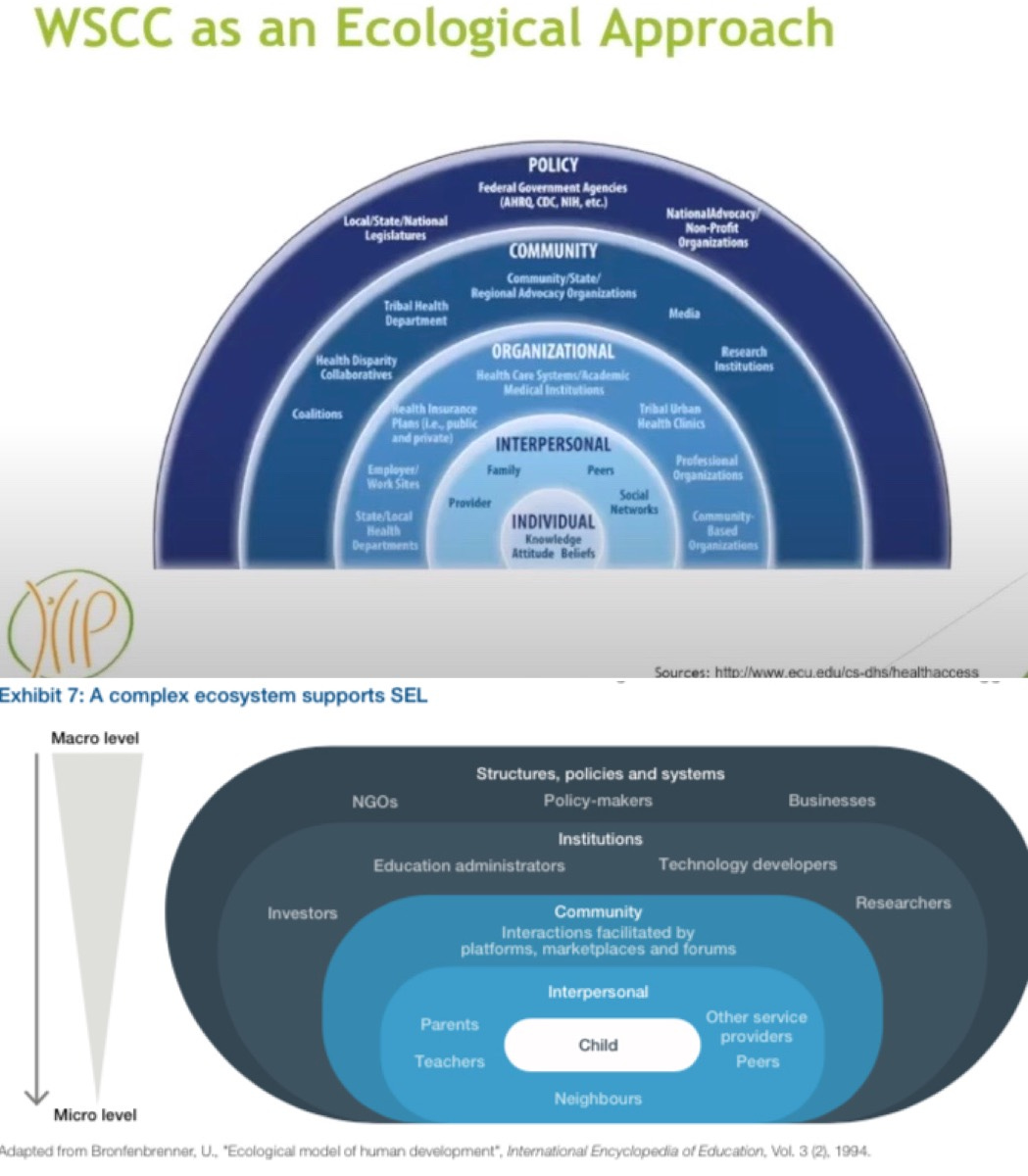
The report from the WEF has one more major focus: how to build and enhance public/private partnerships in education, in an effort to “remove policy barriers” that prevent the merger of SEL with tech tools in the classroom. This portion of the report should give even the most ardent School Choice supporters pause. School Choice is at its base, a merger of state money with corporate influences, much like we see in universities. This public/private merger at once gives elected officials less oversight over students in the private schools it is now funding, while increasing the influence of private corporations, like technology companies.
As we pass initiatives that remove the power of voter accountable state officials to regulate what students are exposed to in a centralized public school system, we increase the reach of companies like Microsoft, Google, and Apple further into the classroom via SEL powered technology. And considering that we now know for sure that global entities like the WEF want to exert more influence over the minds of students by the technology that will be sold by the tech companies that they work with, we should maybe think about being more skeptical of School Choice and all that it entails.
https://www3.weforum.org/docs/WEF_New_Vision_for_Education.pdf
https://www3.weforum.org/docs/WEF_New_Vision_for_Education.pdf




